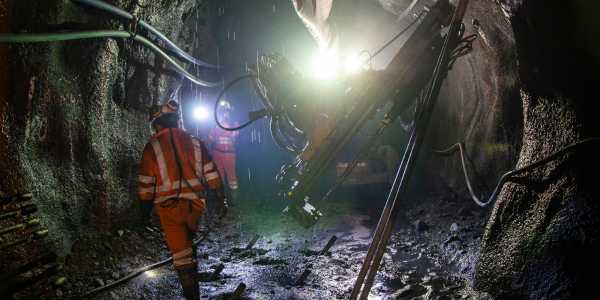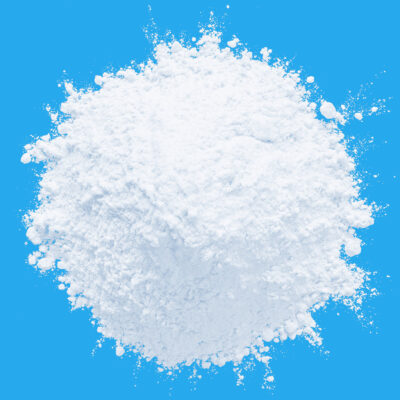Zinc dust is best product in it’s class for using in protective paints. It gives lasting protection to metallic substrates. It can be offered as one pack or two pack system primers and paints.
The Science Behind Zinc Dust’s Corrosion Inhibition Properties
Zinc is an abundant metal found in nature that has many industrial applications. Zinc’s protective quality against corrosion is provided by an oxide layer forming on its surface; this layer may be affected by several factors including humidity of environment, concentration of dissolved oxygen or acidity levels in its surroundings – and can range anywhere from minimal protection to substantial impact depending on alloy type and environment.
Submersion in liquid enhances zinc’s protective capabilities significantly. The pH or basicity of the liquid can determine how effective its protection will be; temperature and flow rate also play a factor.
Zinc placed in an acidic solution forms a thin film of adducts on its surface, acting as an insulator and stopping electrons from freely crossing its interface – this prevents anodic corrosion which favors oxygen.
However, if an adduct is removed from the zinc surface, electrons will flow freely across its interface and cause further anodic corrosion to continue. Thus, it is crucial that acidic environments provide enough acidity for zinc surface adducts to remain intact on their surfaces and protect from further corrosion.
Corrosion of metal surfaces can lead to significant damage that is expensive and difficult to repair, but applying zinc flake coating in environments exposed to corrosive elements may reduce costs and repair times by 100 times or more.
Zinc coatings used in combination with magnesium chloride (MgCl2) galvanic sealants significantly decrease corrosion rates on steel structures, thus decreasing corrosion rates by an immense degree.
The global zinc dust market is expected to experience substantial expansion. Asia Pacific region is anticipated to lead this surge, thanks to a rapidly developing chemical industry which increases demand for zinc which drives sales of zinc powder globally.
Exploring the Role of Zinc Dust in Sacrificial Protection
Zinc dust (also referred to as zinc powder) is a bluish-gray, inodorous, insoluble substance with a melting point of 907 degrees Celsius (1,665 degrees Fahrenheit), commonly used in producing protective coatings for steel surfaces.
Zinc dust can be mixed into either organic or inorganic zinc paints which are then applied by spray, brushing, rolling and dipping – providing optimal corrosion protection through corrosion shielding coatings that reach dry film thickness targets.
Zinc is an extremely reactive metal, meaning it has an affinity to attack other materials. Corrosion of zinc surfaces is driven by electrochemical processes and its rate of attack depends on environmental chemical concentrations and pH conditions – for instance it corrodes more quickly in air with elevated concentrations of sulphur dioxide, while water-soluble corrosion products like sulfates or sulphites easily wash away with rain showers, leaving freshly uncorroded surfaces exposed for further corrosion attacks.
When zinc-rich coatings are exposed to acidic environments, their zinc particles react with acids to form layers of corrosion products on steel substrates that eventually protect from further attack when scratched by airborne corrosion products. This phenomenon is known as “sacrificial protection.” When scratched through, however, these protections become exposed and provide even further defense for continued attack on surface steel surfaces.
Galvanic corrosion protection is one of the more prevalent forms of protection. Unlike sacrificial corrosion, which typically only attacks one side of a steel surface, galvanic corrosion affects both sides simultaneously – usually more severely due to galvanic cells’ greater potential for electrical current flow.
In this study, both sacrificial and galvanic mechanisms of protection were assessed using several zinc powders and diluents as well as two types of galvanic corrosion: anodic and cathodic corrosion. Results demonstrated that adding diluents increased zinc’s capacity to provide cathodic protection while having no detrimental impact on its sacrificial protection capabilities.
Galvanic Corrosion
Zinc dust and zinc oxide paints provide effective protection for steel structures in many different environments. They can withstand weathering at harsh coastal locations, protect against corrosion in underground and underwater structures, as well as help prevent the deterioration of steel under heavy loads. They’re particularly well suited for galvanized steel structures – providing ideal priming capabilities against atmospheric and underwater exposure.
Galvanic corrosion refers to the destructive interaction between dissimilar metals in an electrolyte (usually water) environment. This phenomenon can happen between any two metals such as iron and aluminum or stainless steel and carbon steel if coupled together or submerged in an electrolyte such as acid. For galvanic corrosion to occur there must be contact areas between both metals where an electric current flows between them (physical contact or ionic contact is possible); an electrolyte could either be fluid such as acid or alkaline fluid or solids such as wetted solids (dissolved salts or minerals corrosive minerals in acid/alkaline solutions); electrolytes could even come in form of solutions such as acid/alkaline fluids/corrosive minerals.
Zinc corrosion rates tend to be much slower than steel corrodes; its electrons are more readily accessible compared to those in less noble steel alloys, providing protection to more vulnerable steel sheets.
Zinc therefore acts as an invaluable sacrificial metal offering its protection to more fragile ones.
Damage to zinc coatings will produce a whitish-grey area that often misbehaves as wet storage stain, but is actually due to corrosion of zinc metal corroding and dissolving into sparingly soluble zinc alloys, providing protection from further corrosion while simultaneously increasing lifespan of coating. This process, known as self-healing, extends their lifespan significantly.
Zinc powder coatings provide protection from rust in many outdoor settings; however, indoor industrial or manufacturing environments can also promote corrosion. Moisture often finds its way into ventilation ducts while chemical-laden atmospheres may result in corrosion on exposed metal surfaces. Zinc powder coatings provide cathodic protection to help extend the lifespan of structures in such settings.
Step-by-Step Process of Applying Zinc Dust for Corrosion Prevention
Zinc is an extremely versatile metal used in various ways. Zinc galvanization, commonly applied to steel surfaces in industry to form a zinc rich coating known as galvanization, serves primarily to protect them from rusting. But galvanization also serves other functions, including acting as a reducing agent in chemical reactions; aiding agriculture as micro-nutrient; helping plants absorb other essential nutrients; and even being employed as an unorthodox means for cleaning toilets!
Zinc’s effectiveness at preventing rust is due to both its physical barrier and cathodic protection roles. When exposed steel comes into contact with water at an edge or scratch, zinc ‘sacrifices itself’ to stop corrosion by drawing in airborne negative ions due to being more electronegative than iron and therefore drawing them in.
Barrier paints play an essential part of corrosion inhibition as they act as an extra safeguard. Even if damage occurs to them, rust won’t quickly creep beneath any damaged spots compared to regular paints which simply act as a shield between corrosion initiating substances and metal substrates being protected by them.
Zinc can be found naturally in the environment as a result of mining, smelting and burning coal and other materials, industrial waste from metal manufacturing industries and electric utilities, soil leaching of industrial waste from those same sources and leaching of zinc into water supplies – it’s easily leachable!
Powdered metal can be applied through thermal spraying onto surfaces; this can be done either large scale via special machinery or more discretely on smaller parts using hand-held sprayers. Powdered metal is also an important ingredient used in soldering to strengthen joints between metal components.
While using powdered metal is generally safe, there are certain things you should keep an eye out for when working with it. When exposed to certain acids and strong alkalis, for instance, hydrogen gas will form which could become explosive if it comes into contact with water or heat sources. Additionally, wet or exposed heat sources could potentially create explosive conditions.
—————–
Esaar International Private Limited
We are India’s leading supplier and exporter of Raw Materials used for manufacturing paints, and Zinc Dust








Leave a Reply